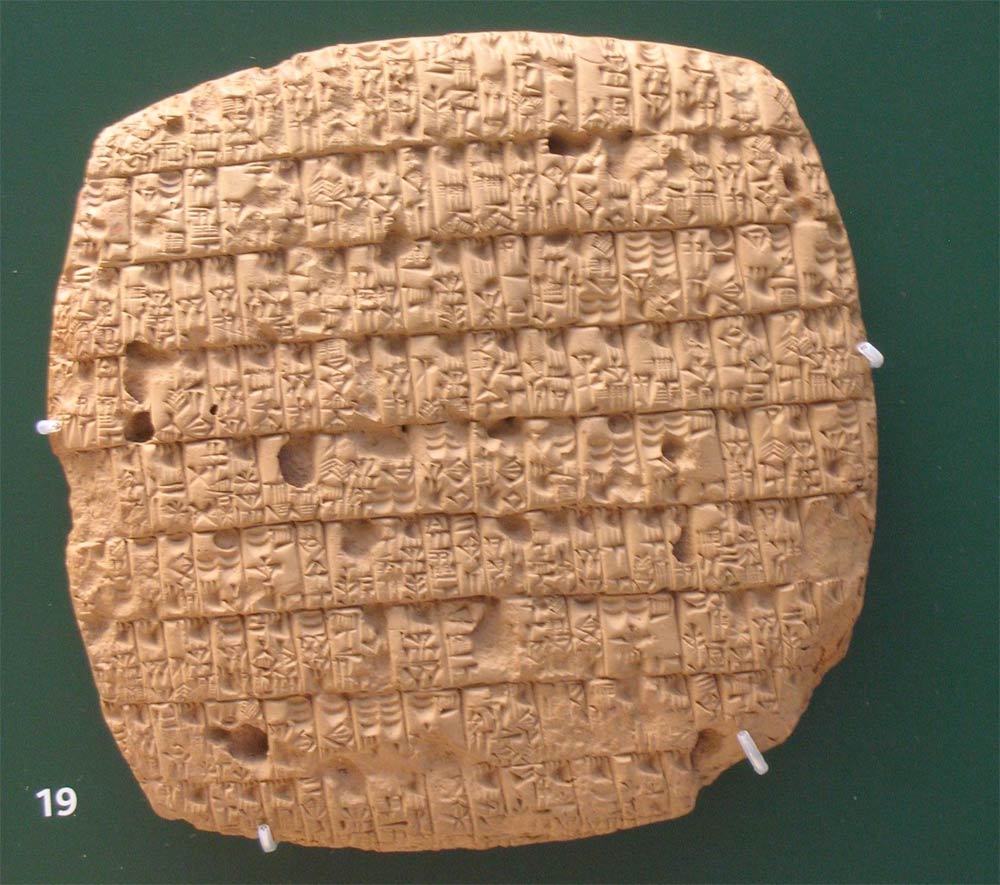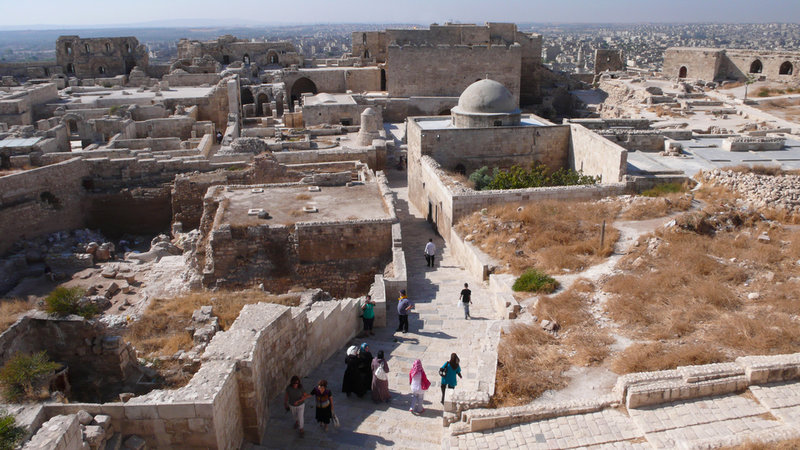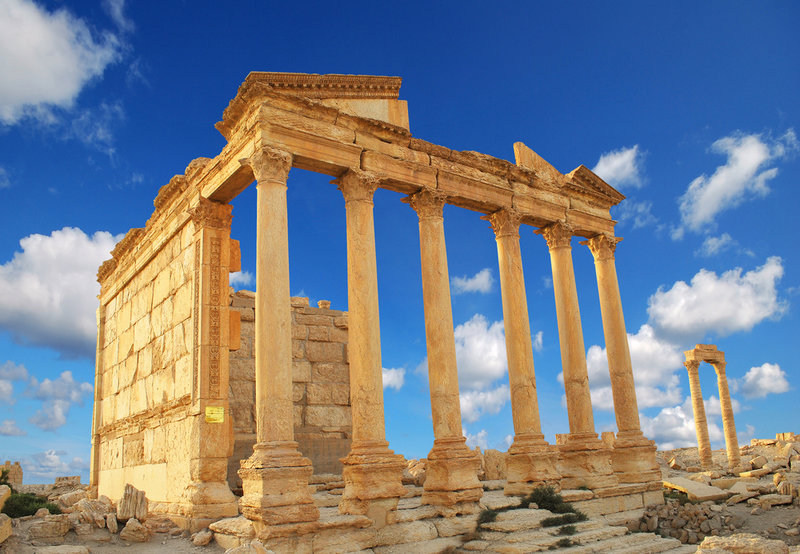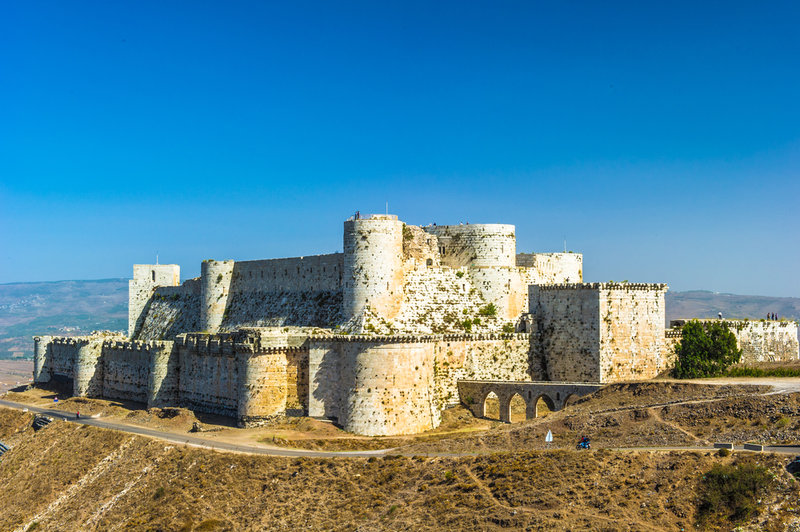7 Stunning Archaeological Sites in Syria
Introduction

Syria has one of the world's richest archaeological heritages. At the crossroads of Africa, Asia and Europe, the country holds the marks of many of the world's great empires.
From the cuneiform tablets of Ebla to stunning Roman cities, here are seven of the most amazing archaeological sites in Syria.
Trove of tablets

The ancient city of Ebla, or Tell Mardikh, was first discovered about 34 miles (55 km) south of Aleppo by Italian archaeologist Paolo Matthiae in 1964. The city flourished from about 3,000 to 2,500 years ago, but shows signs of having been continuously occupied since at least 3000 B.C. Archaeologists unearthed a trove of 20,000 cuneiform tablets written in a Sumerian script. The tablets, which mostly pertained to economics, provided an unprecedented look at everyday life for inhabitants of the ancient city.
Roman ruins

Apamea was an ancient city founded by the Seleucid King Nicator in 300 B.C. The vast city, founded on the banks of the Orontes River, boasted half a million citizens at its peak. The city became part of the Roman Empire in 64 B.C.
An earthquake destroyed the majestic metropolis in A.D. 115, and foreign conquerors sacked the rebuilt city in the seventh century, but visitors can still view its stunning colonnade.
Caravan city

Bosra was once the capital of the Roman province of Arabia. The city was first mentioned in Egyptian tablets found at Tell el-Amarna that are nearly 3,400 years old, and the Nabateans ruled the area in later years. In A.D. 106, Bosra became part of the Roman Empire. During its heyday Bosra was a frontier trading post where Arabian caravans would buy supplies for their long treks.
The city is largely intact, with traces of each ruling empire remaining today. The city houses a stunningly preserved second-century Roman theater, one of the oldest surviving mosques in the world and a Christian Cathedral from the Byzantine period.
Get the world’s most fascinating discoveries delivered straight to your inbox.
Ancient occupation

The ancient city of Aleppo has been continuously occupied for at least 5,000 years. Along the way, it has been ruled by nearly every major empire, from the Hittites to the Assyrians to the Mongols to the Ottomans. The city, the largest in Syria, boasts a massive 12th-century mosque and a 13th-century citadel. The citadel itself was built on a tell, or archaeological mound, that dates back to at least 3000 B.C.
Center of crafts

Damascus, the capital of Syria, was founded sometime in the third millennia B.C. But excavations outside the city, at Tell Ramad, suggest humans have been living in the area for at least 8,000 to 10,000 years. In Medieval times, the city developed a booming craft industry, specializing in the fabrication of lace and swords. Traces of the city's ancient heritage still remain today in a Roman-Era temple to the god Jupiter, ancient Roman city walls and an eighth-century Umayyad mosque. [5 Surprising Cultural Facts About Syria]
Desert oasis

The oasis city of Palmyra was once at the nexus of trade routes connecting Rome to India, Persia and China. The city was first mentioned in the second century B.C., but grew in prominence as a caravan city when it came under Roman control. Despite being sacked in A.D. 272, many traces of the ancient city still remain, including colonnades, a temple to Ba'al, Diocletian's camp — a large military complex — and a vast necropolis outside the city.
Crusader fortress

The amazingly well-preserved Krak Des Chevalier castle in western Syria was built by the Hospitalier Knights between 1142 and 1170. The knights were charged with the defense of the Holy Land during the First Crusade. A Sultan seized the castle in 1271, repaired some of the damage and replaced the chapel with a mosque. But the stunningly preserved fortress still looks much as it did in the 13th century.
Unfortunately, the civil war has taken its toll on the ancient Crusader stronghold: Several reports indicate that the castle was damaged in July 2013.

Tia is the editor-in-chief (premium) and was formerly managing editor and senior writer for Live Science. Her work has appeared in Scientific American, Wired.com, Science News and other outlets. She holds a master's degree in bioengineering from the University of Washington, a graduate certificate in science writing from UC Santa Cruz and a bachelor's degree in mechanical engineering from the University of Texas at Austin. Tia was part of a team at the Milwaukee Journal Sentinel that published the Empty Cradles series on preterm births, which won multiple awards, including the 2012 Casey Medal for Meritorious Journalism.
